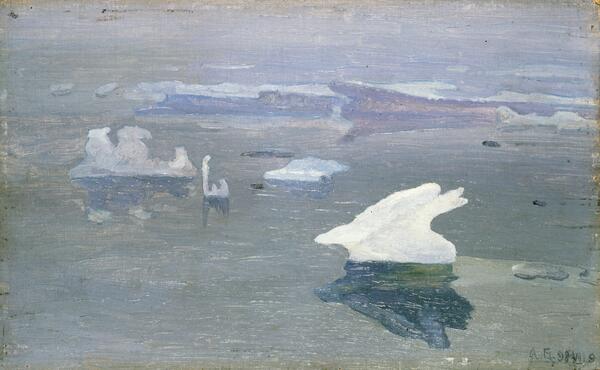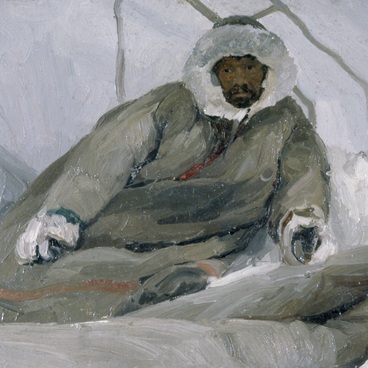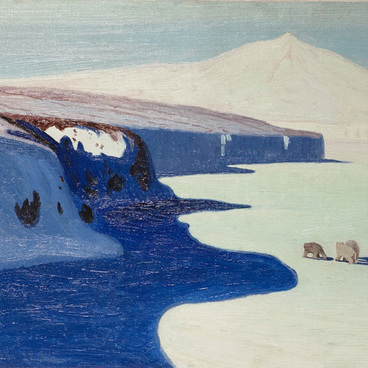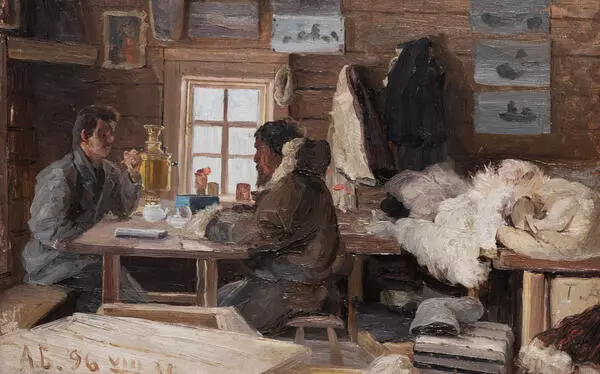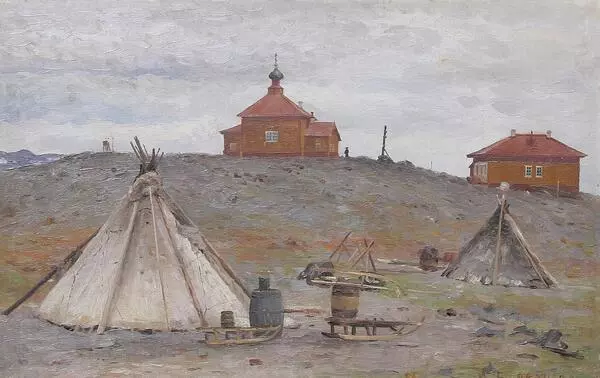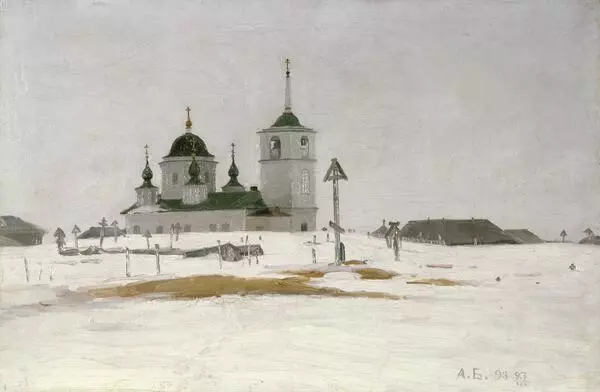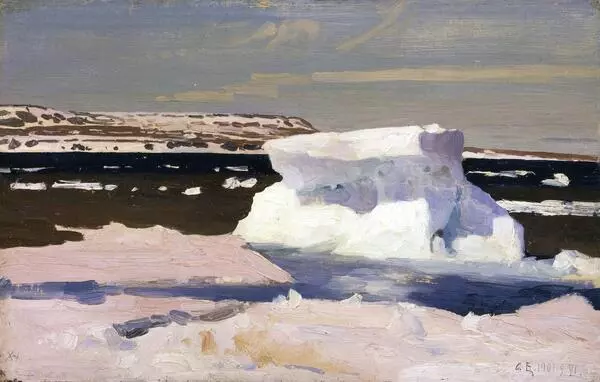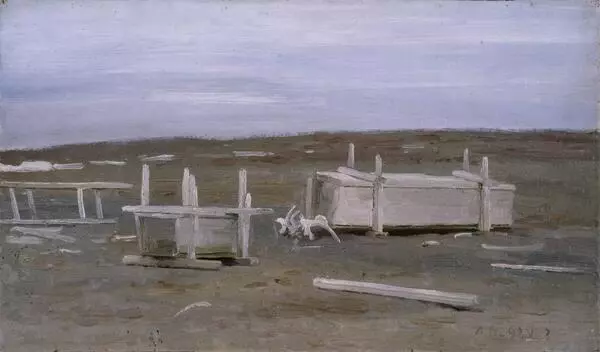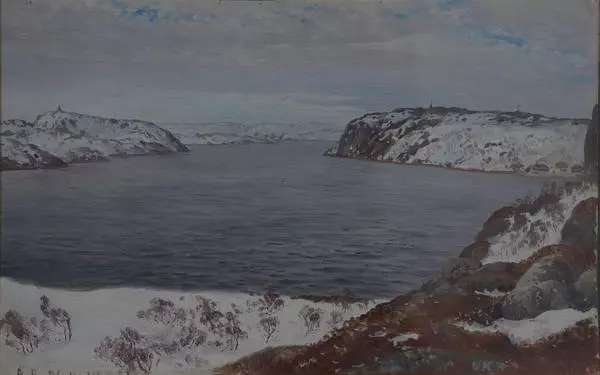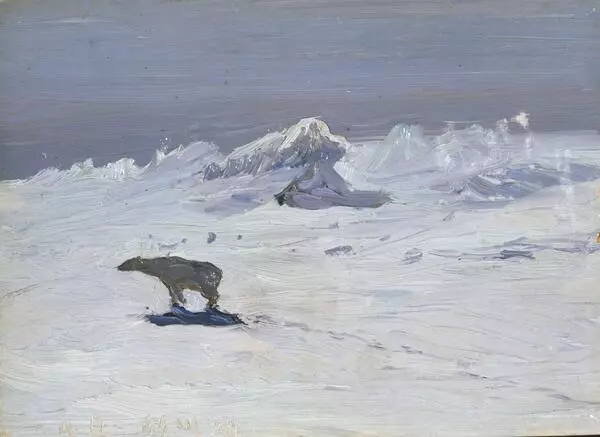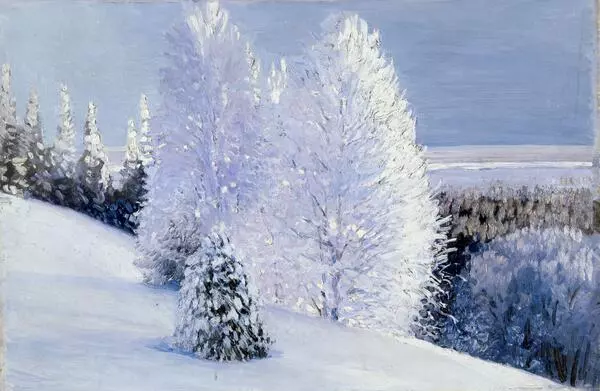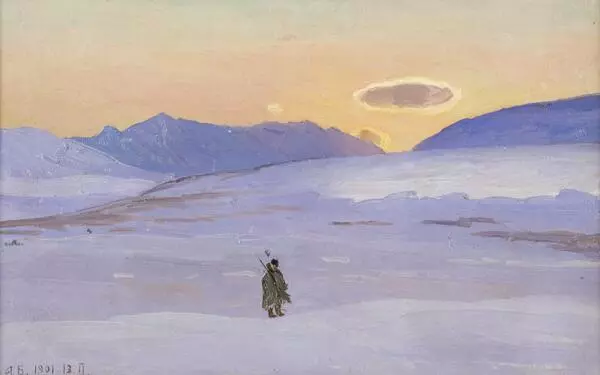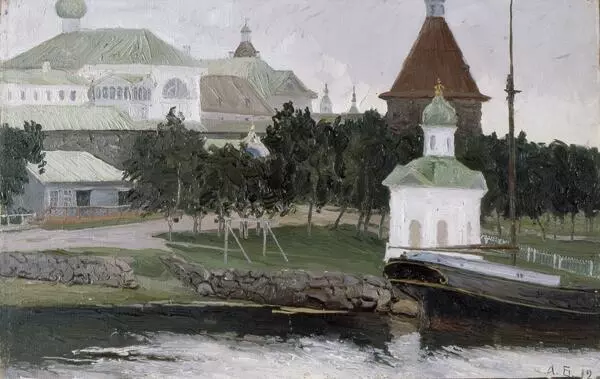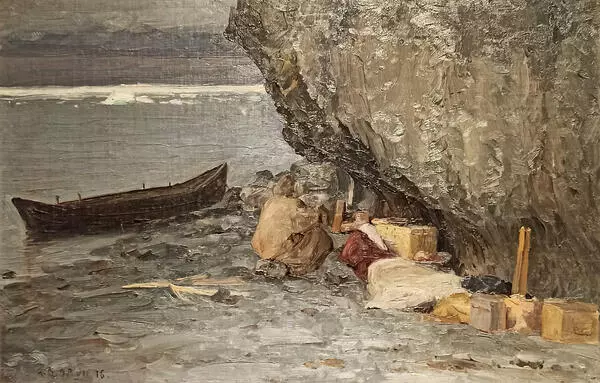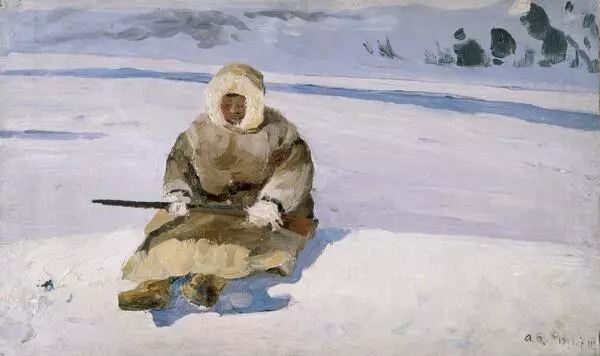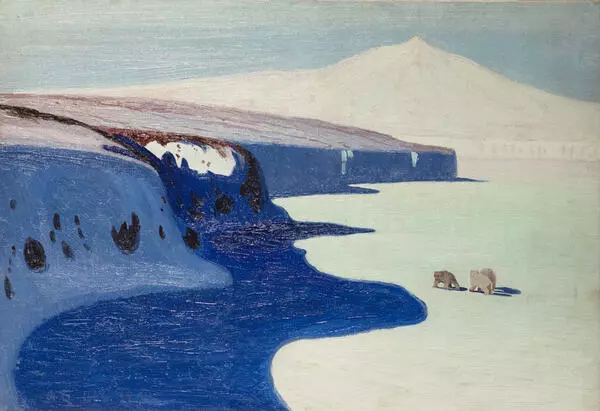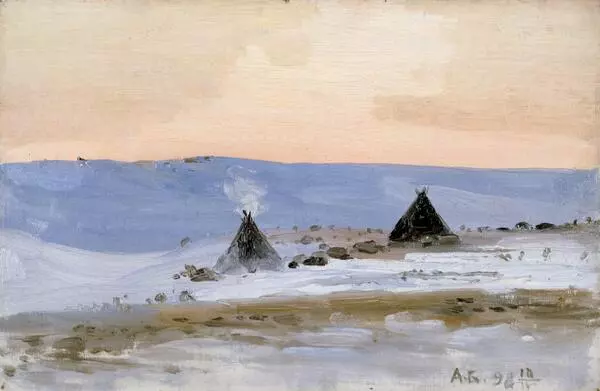‘Oh, that sea fog! ’, Borisov exclaims. ‘It fills the traveler’s soul with some kind of ennui, of desperation. It covers everything with its mysterious veil, as if trying to conceal the unknown lands from the curious eye of the man. It is as if you were put in a grave, dump and cold… Wherever you run, to the left or to the right, you’ll find the same dense fog, the same impenetrable mortal wall and death. Not a single sound is heard in this murderous fog. As if the Death itself has come down to this godforsaken place, covering it with its terrible cloak.’
The North weather is ever-changing, and you have to be prepared for anything. Peculiar, impenetrable fogs are quite common. In many of his studies, Borisov proves to be a fine master of the open-air painting, especially when he depicts ice and snow. The artist renders the light masterfully. Although the landscapes he depicts are often similar to one another, the tonal variety gives the canvases emotional power and makes each of them unique and interesting to look at.
This is what Borisov wrote about the difficulties of depicting the polar scenery: ‘The beauty of the colour reflections found in this kind of nature lies in those extremely delicate sparkling overtones that could be only compared to gems reflecting green, blueish, yellowish and other colours at the same time. In my opinion, while the common landscape of Central Russia can be rendered with tones and half-tones, you need to be aware of even one tenth of a tone while rendering the Far North scenery. And God forbid you remember some artistic device, some tonality you liked in a painting you once saw: you will inevitably deviate from nature, it will be offended and turn away from you forever! It has to be just the truth and only the truth, devoid of moralizing, a thorough depiction of all the odd, unbelievable juxtapositions of tones, and only this way it is possible to ensure that the painting would give some vague idea of the real scenery a couple of months later. But when comparing the painting to the real landscape, the disappointed artist sees just a miserable, insolent attempt that has failed. I suppose every artist must feel it, whatever his motif is. But in normal conditions, the palette is simpler to render and the subject makes the picture more interesting. However, in the North, there is no subject, and if there is, it is too plain to be appealing.’
The North weather is ever-changing, and you have to be prepared for anything. Peculiar, impenetrable fogs are quite common. In many of his studies, Borisov proves to be a fine master of the open-air painting, especially when he depicts ice and snow. The artist renders the light masterfully. Although the landscapes he depicts are often similar to one another, the tonal variety gives the canvases emotional power and makes each of them unique and interesting to look at.
This is what Borisov wrote about the difficulties of depicting the polar scenery: ‘The beauty of the colour reflections found in this kind of nature lies in those extremely delicate sparkling overtones that could be only compared to gems reflecting green, blueish, yellowish and other colours at the same time. In my opinion, while the common landscape of Central Russia can be rendered with tones and half-tones, you need to be aware of even one tenth of a tone while rendering the Far North scenery. And God forbid you remember some artistic device, some tonality you liked in a painting you once saw: you will inevitably deviate from nature, it will be offended and turn away from you forever! It has to be just the truth and only the truth, devoid of moralizing, a thorough depiction of all the odd, unbelievable juxtapositions of tones, and only this way it is possible to ensure that the painting would give some vague idea of the real scenery a couple of months later. But when comparing the painting to the real landscape, the disappointed artist sees just a miserable, insolent attempt that has failed. I suppose every artist must feel it, whatever his motif is. But in normal conditions, the palette is simpler to render and the subject makes the picture more interesting. However, in the North, there is no subject, and if there is, it is too plain to be appealing.’

